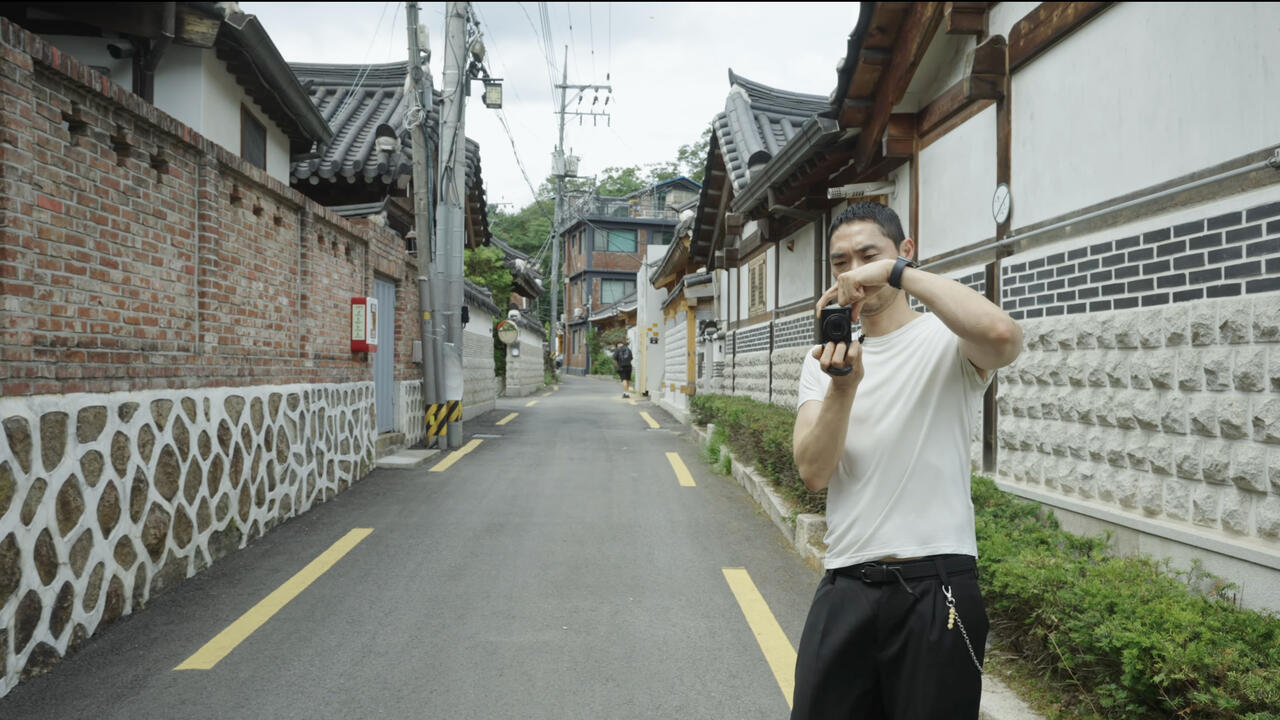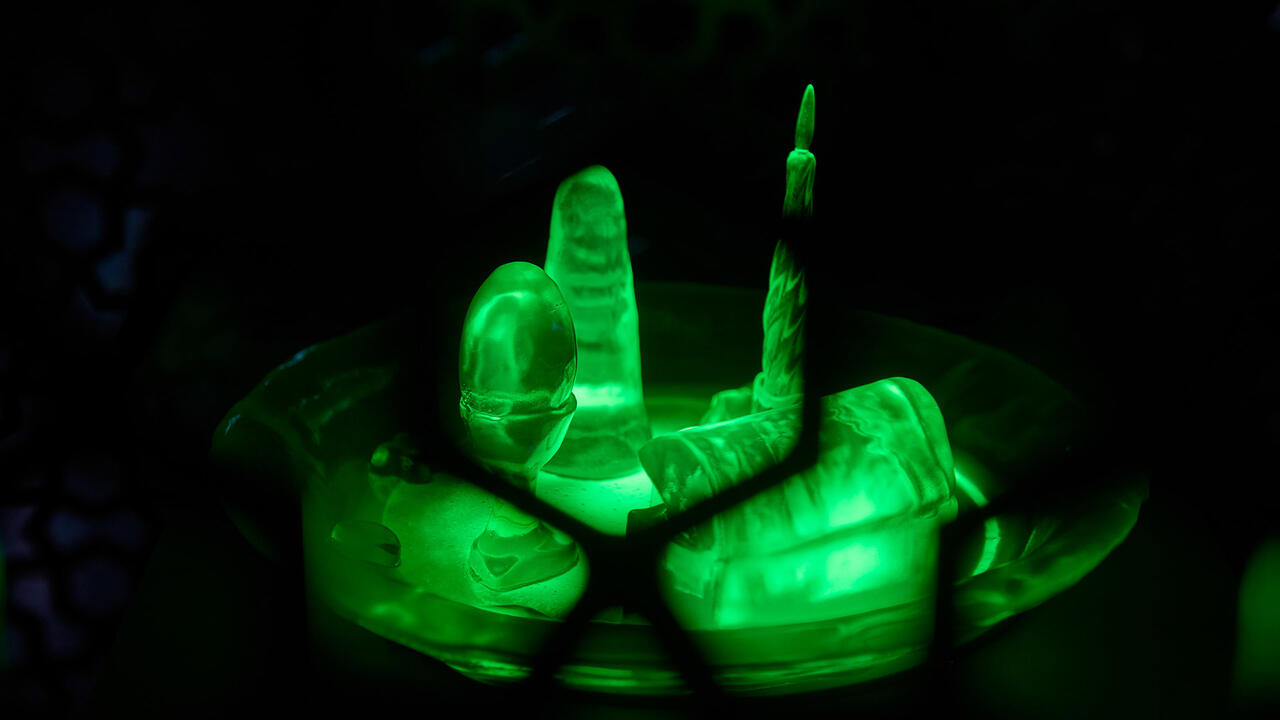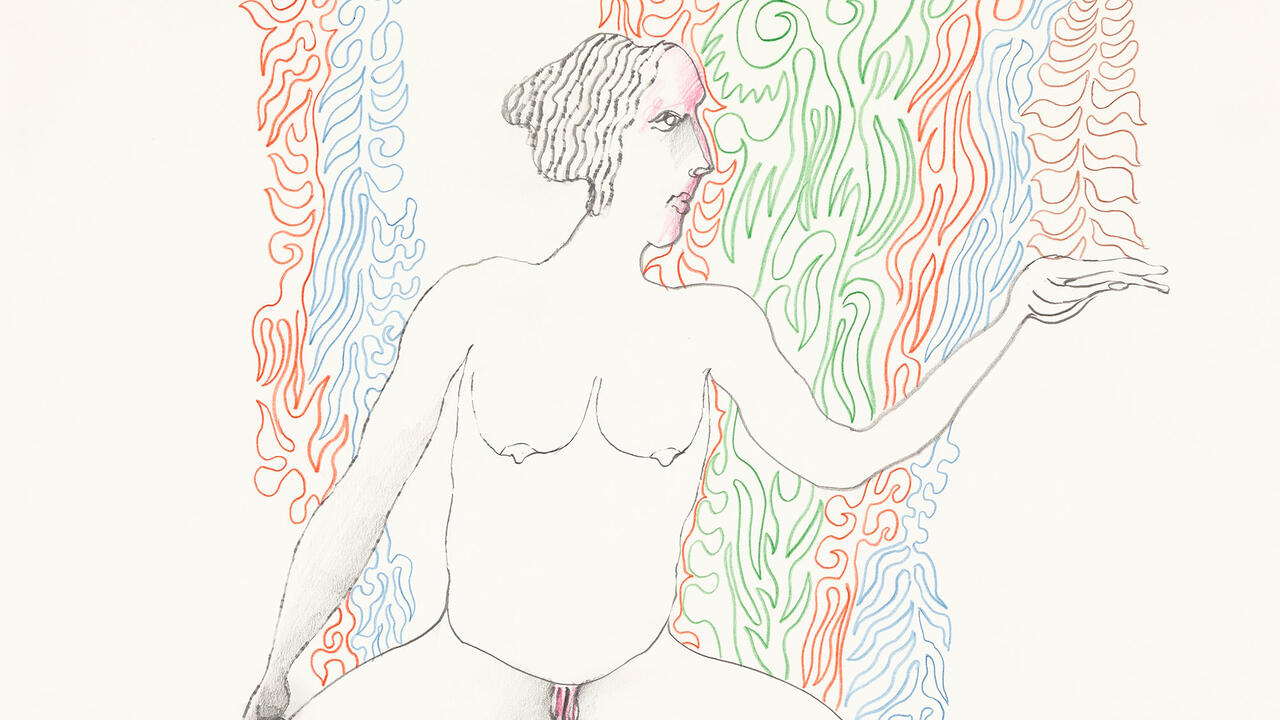Myth and Man
Christian Haye on 'Black Male...' at the Whitney
Christian Haye on 'Black Male...' at the Whitney
'For some time now the critical challenge for black folks has been to expand the discussion of race and representations beyond debates about good and bad imagery. Often what is thought to be good is merely a reaction against representations created by white people that were blatantly stereotypical.'
- bell hooks, Black Looks: Race and Representation
Nothing turns me into a quivering mass of psychobabble quite like tropes of gender construction. Coupled with a thetical discussion of racial typing and I am thrown into a state of identity-politicking bliss that is as close to nirvana as I want to get. I know I'm not alone here. For months a pleasing amount of buzz had preceded the opening of 'Black Male: Representations of Masculinity in Contemporary Art' at the Whitney Museum of American Art. The very idea of an exhibition with the audacity to correlate Mapplethorpe and David Hammons had the art community in a tizzy. Thelma Golden, Associate Curator of Art at the Whitney Museum, states in her introductory essay that 'Black masculinity suffers not just from overrepresentation, but oversimplification, demonisation, and (at times) utter incomprehension.' No arguments here. However, opening the same essay (and stencilled onto the wall at the entrance to the exhibition) she states, 'One of the greatest inventions of the 20th century is the African-American male - 'invented' because Black masculinity represents an amalgam of fears and projections in the American psyche which rarely conveys or contains the trope of truth about the Black male's existence.' It is the twisted irony of 'Black Male...' that while being fully aware of this state, it never dares to refute it nor seek to replace it.
Much bigger in scope and imagination than in actuality, 'Black Male...' consists of 70 works by 29 artists pressed into the third floor of the Whitney. Adrian Piper's I Embody (1975) hides around the corner from Golden's opening postulation. The work documents her performance in 70s era blaxploitation drag. An afro wig, bell-bottoms and large sunglasses enable the artist to exist as a Black male. It is the concreteness of Piper's Blackness that makes her work engaging, but this quality also makes one question which audience the work is made for. In her Four Intruders Plus Alarm Systems (1980) the viewer enters a claustrophobic corkscrew to find at its nexus portraits of four Black men, eyes spotlit, attempting to stare down the viewer while also closely watching each other. The artist realises that it is this sort of paranoia which keeps images of Blackness stagnant, always rooted and formed within a context of white fear.
As if to illustrate Piper's point, two weeks before 'Black Male...' opened at the Whitney, Susan Smith, a South Carolina mother of two, accused a Black man of carjacking her and kidnapping her children. A police sketch of a man with Darkie Toothpaste lips, mumps-size cheeks and a delicate white nose was wired across the country. There were leads and sightings from Seattle to Miami. Nine days later Susan Smith confessed to the double homicide. Her account, and the accompanying police sketch exposed more about the 'fears and projections' of Black male construction than the Whitney Museum was able to, while at the same time underscoring the necessity for an institution to address the collective schizophrenia surrounding Black male representation.
The threatening Black male obviously predates both the Whitney Museum and Susan Smith, but the advent of the blaxploitation era added a new spin to the archetype. Now, instead of submitting to the pattern, Black people could exploit and market it. (In today's hip-hop community, Dr Dre and Onyx come to mind as artists who have successfully commodified the rap version of the Black street warrior.) One of the most conspicuous problems with this position is that it can be coopted so easily by others, such as Dawn Ader DeDeaux with her oversized painted photographs entitled the Warrior Myth Icon series (1991). Young black men with guns in hand or dangling necklaces of gold, stand looking beyond the viewer. Jeff Koons also chimes in with his appropriation of a Nike ad featuring basketball celebrity Moses Malone, suggesting that the Black warrior icon can be used as easily by Whites as by Blacks. Standing amidst a sea of basketballs, Malone looks gravely at the observer, offering a basketball in one hand and walking stick in the other.
Yet another liability of the undefeated warrior image is that it exists mostly as myth. Gary Simmons' Lineup (1993) presents eight pairs of gold-plated sneakers queued up beneath a height chart. Carl Pope's Some of the Greatest Hits of the New York City Police Department: A Celebration of Meritorious Achievement in Community Services (1994) is an abundant collection of trophies memorialising the men of colour killed by NYPD blues. Both of these works sacrifice visual payoff for didactic metaphor. Conversely, David Hammons, who has consistently refused to participate in Whitney exhibitions (including the last two he has been incorporated in), is able to express the literal metaphor in Injustice Case (1970) while expanding the emotional lexicon of oppression. Hammons' bodyprints of himself bound and gagged in a straight-backed chair framed by an American flag is a superb visual allegory for Black male vocalisation.
Of course, when sexuality or class issues are attached, the assemblage of Black masculine identity is radically expanded. In Andres Serrano's Nomads (1990) series we are presented with oversized portraits of homeless men from the streets of New York. It is in Curtis that one discovers a look of pride refreshingly free from ire and despondence. The subject holds a belt buckle depicting a roaring lion framed with the words, 'QUALITY GARMENTS FOR QUALITY PEOPLE' and 'IN DENIM WE TRUST'. Curtis is dressed in an adventuresome fedora and around his neck wears a flamboyant scarf. His attire is sadly rich and ironic when coupled with his situation, but even Serrano's bleak backdrop cannot diminish the dignity with which the man carries himself. The importance of accessorising one's masculinity is also explored in Barkley Hendricks' lush paintings: North Philly Niggah (1975) preserves the pimp niggah in an almost time capsule fashion. Snoop Doggy Dogg and Spike Lee's Crooklyn both attempted to recapture this spirit, but Hendricks' paintings make one realise the difference between a period piece and nostalgia. The equation reads: Memory - Nostalgia = Authenticity.
Authenticity and Realness are obsessions for Lyle Ashton Harris. Despite the fact that his recent works shown in SoHo and on 42nd Street would have been much more appropriate, the older images here still manage to eclipse certain aspects of Robert Mapplethorpe's work. Much has been said of Mapplethorpe's objectifying of the Black male body, but Harris is the only artist doing something about it. Standing akimbo in a frilly tutu, Harris says '100% faggot, your turn' to anyone throwing shade. Of course entering this dialogue will always invite some throwing down. Novelist Ishmael Reed remarks, 'Now that the feminists don't have control over the debate, the gays are taking over.' Homosexuals have always intimidated heterosexual identity by threatening to reverse objectification within a homosocial context. Surely black heterosexual identity must be made of stronger stuff.
How did our self-images, not to mention non-self images, become so monolithic? And why do so few complain about this? Renée Cox sublimely addresses the question by castrating, crucifying and refracting her Black man. Kevin Everson adds the only dash of melancholy with his piece recalling his small town Ohio home. But the work, consisting of a pair of end tables with framed photos resting on top, is so suburban and quiet that it gets drowned by the preachy didacticism of the rest of the show. In her refreshingly lucid catalogue essay, bell hooks offers a solution to preempt the iconic stalemate. 'To break with the ruling hegemony that has a hold on images of the Black male body, a revolutionary visual aesthetic must emerge that reappropriates, revises, and invents, that gives everyone something new to look at.' This revolutionary aesthetic exists. It is in the work of Kerry Marshall, conspicuously absent from the show. Or of David Nelson whose Girth and Mirth portrait of the late Harold Washington in a G-string and bra would have been a perfect addition. 'Black Male...' is also sorely in need of abstraction. In much the same way that 'macho' is so often used to contextualise Jackson Pollock, the work of Melvin Edwards, Al Loving or Howerdena Pindell could attest to the construction of Black Masculinity. One also can't help but be amazed at the lack of Africanisms within the selected works, further emphasising the canyon that is the middle-way. In fact, if taken solely upon the basis of 'Black Male...,' it would seem that outside of the routinely hegemonic black/white American dichotomy, African-American construction happens in a vacuum. 'Black Male...' righteously attempts to kick the art world in its teeth but its foot invariably lands elsewhere.

















